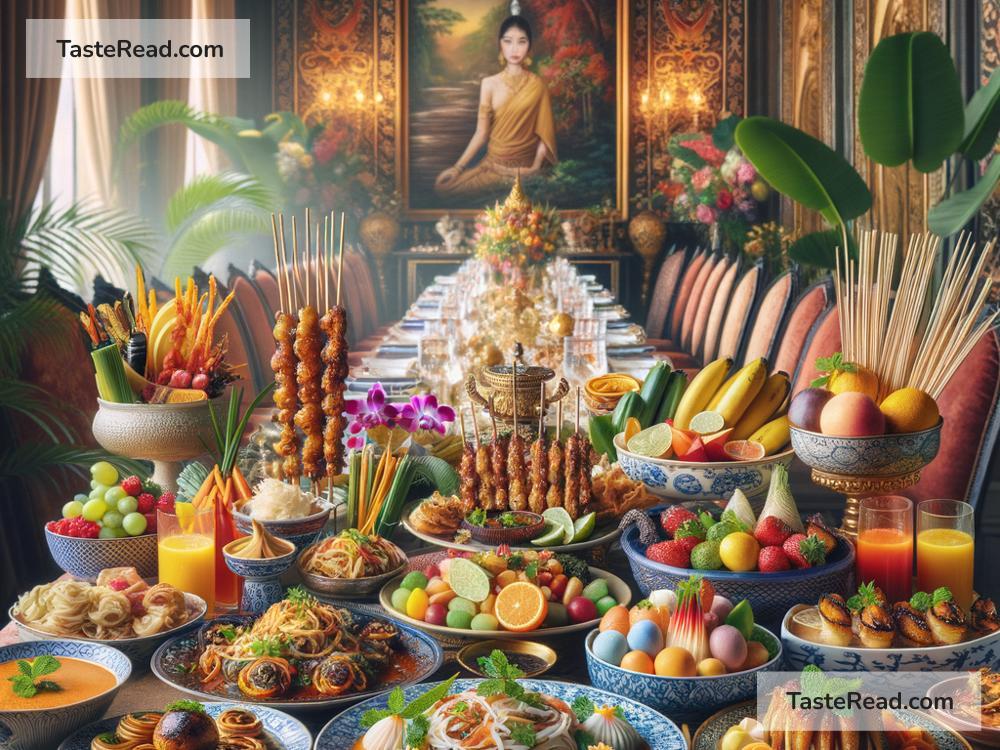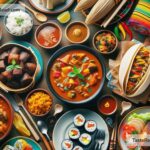The Cultural Diversity of Food in Crazy Rich Asians
The film Crazy Rich Asians, released in 2018, became a huge success not only for its glamorous story but also for how it showcased Asian culture—especially through its food. Food plays a major role in this movie, helping tell the story of family, heritage, and identity. With colorful dishes, traditional cooking techniques, and scenes centered around eating, Crazy Rich Asians gives the audience a delicious taste of the cultural diversity in Asia.
In this blog, we’ll explore how the movie uses food to celebrate cultural differences, preserve heritage, and strengthen connections between people.
Food as Family Tradition
One of the first scenes in Crazy Rich Asians is when Rachel Chu, the lead character, visits Nick Young’s hometown in Singapore and meets his family for the first time. She is introduced to Singaporean street food at a bustling hawker center. This moment is more than just a fun food stop—it shows how food is tied to tradition and community in Singapore.
At the hawker center, locals gather to enjoy affordable and delicious dishes, ranging from char kway teow (fried noodles) to satay (grilled meat skewers). Each dish tells a story of Singapore’s melting pot of cultures, blending influences from Chinese, Malay, Indian, and Peranakan cuisines. For Rachel, a Chinese-American, the hawker center experience is both unfamiliar and exciting. As she tries the food, Nick’s family bonds with her by sharing their favorite dishes and encouraging her to try new things. This scene highlights how food brings families and communities together, creating a sense of warmth and belonging.
The focus on street food also reminds viewers that rich cultural heritage isn’t just found in expensive restaurants—it’s rooted in everyday life. By showcasing the hawker center, the filmmakers celebrate Singapore’s vibrant food culture.
Food as a Symbol of Wealth and Class
While Crazy Rich Asians definitely celebrates street food, it also uses food to highlight the characters’ extreme wealth. When Rachel attends lavish dinners and parties at Nick’s family estate, the food is dazzling and over-the-top, just like the lifestyles of the Young family.
One of the most memorable scenes is the dinner party hosted by Nick’s grandmother, Eleanor Young. The table is covered with an impressive spread of traditional Chinese dishes. Each dish is beautifully prepared, emphasizing the family’s dedication to preserving their cultural roots while also demonstrating their affluence. For example, dumplings are handmade during the gathering—a sign of respect for culinary tradition, but also a reminder of the family’s privilege in having the time and resources to dedicate to such detailed cooking.
The dumpling-making scene holds deep cultural meaning because it represents unity and legacy. Grandmother Shang Su Yi, Eleanor, and the rest of the family work together to craft perfect dumplings while discussing their values and expectations. It is through this scene that Rachel begins to understand the tight-knit dynamic of Nick’s family—and also the pressures tied to maintaining their power and status.
Food as a Cultural Bridge
One of the most beautiful things about food in Crazy Rich Asians is how it acts as a bridge between cultures. Rachel’s experience as an American-born Chinese (ABC) is central to the movie. Her upbringing in the U.S. makes her knowledgeable about Western customs, but she struggles to connect with the traditional Chinese expectations of Nick’s family. Food becomes an important tool for her to navigate this cultural gap.
For example, Rachel takes part in making dumplings with Nick’s family. Although she is unfamiliar with the technique, she tries her best to participate. These moments serve as an effort to bridge her identity as an ABC and her boyfriend’s Singaporean-Chinese heritage. Food creates opportunities to learn and understand cultural traditions without relying on words or lectures—it’s hands-on, engaging, and emotional.
Later in the movie, Rachel impresses Nick’s grandmother by preparing a well-thought-out dish during a mahjong game. While food in this scene is more symbolic, it shows how Rachel uses her knowledge and creativity to contribute to the family’s cultural traditions in her own way.
Celebrating Asia’s Diversity
What makes the food in Crazy Rich Asians truly stand out is how it celebrates the wide diversity of Asian cultures. Singapore, where much of the movie takes place, is known for its multicultural food scene, combining dishes and flavors from Chinese, Malay, Indian, and Peranakan traditions. The hawker center scene alone features a variety of options that reflect this blend of cuisines.
For viewers unfamiliar with Asian food, the movie provides an exciting introduction to flavorful dishes like laksa, Hainanese chicken rice, and nasi lemak. These foods are popular across Asia, yet they come with slight variations depending on the country or region, highlighting how cultural exchange shapes culinary traditions.
This celebration of diversity is integral to the movie’s theme. Even as Rachel struggles to fit in with Nick’s family, the food shows that cultural mixing can complement and enrich traditions. While some characters cling tightly to their heritage, others embrace change, creating a balance between past and present.
Final Thoughts
Food is more than just fuel for the body—it’s a powerful storyteller. In Crazy Rich Asians, food is used to express cultural identity, connect people, and celebrate heritage. From the colorful hawker center dishes to the elegant dinner parties, each scene with food adds depth to the story while making viewers hungry for more.
The movie shows us that the flavors of Asia are as rich and diverse as its people. Whether you’re enjoying dumplings at the dinner table or satay at a street stall, food brings people together across boundaries—both cultural and emotional. So the next time you have the chance to try something new, remember the lessons of Crazy Rich Asians: food isn’t just something you eat, it’s a way to connect with the world.


